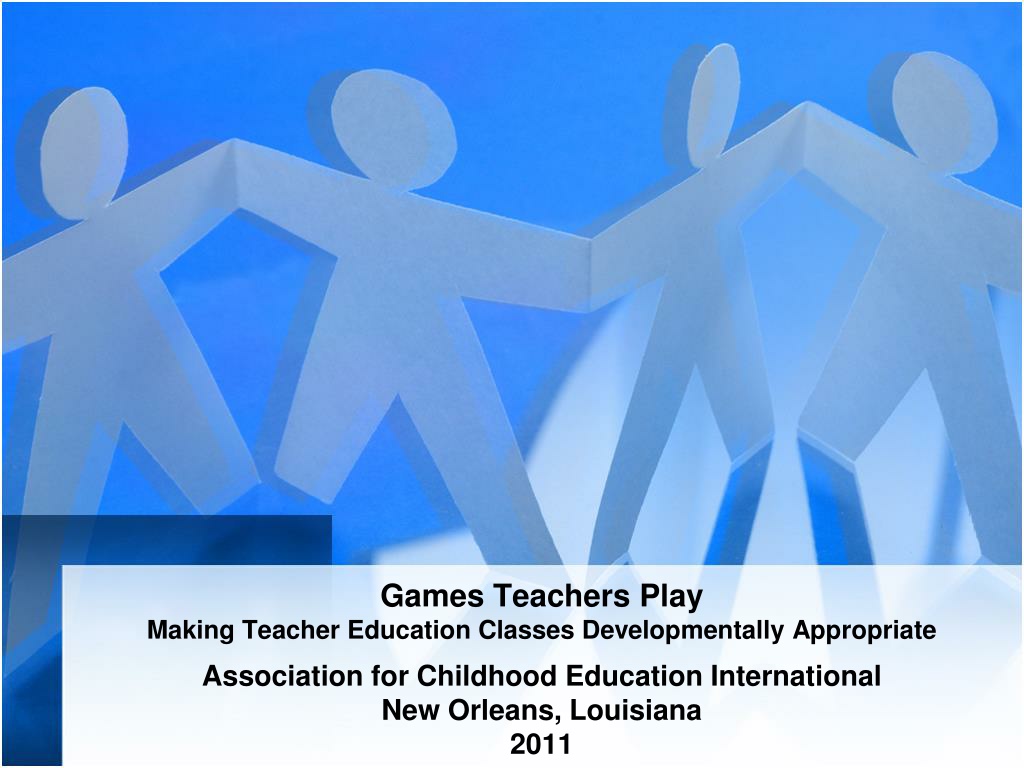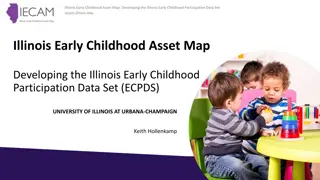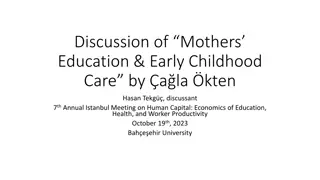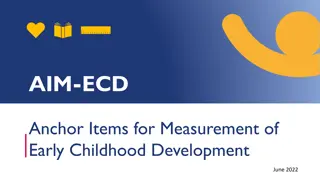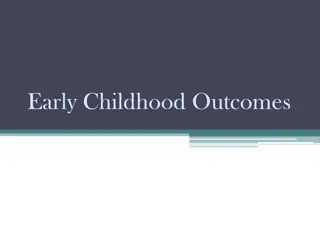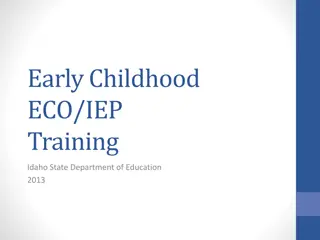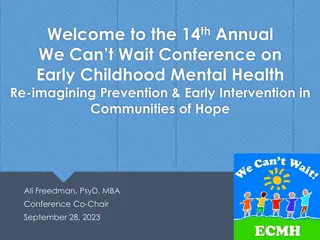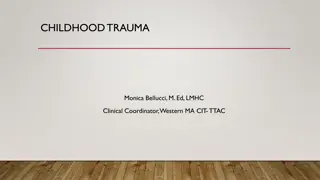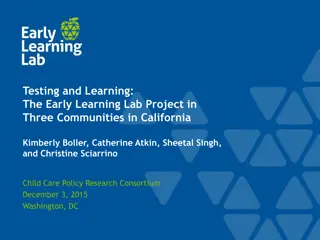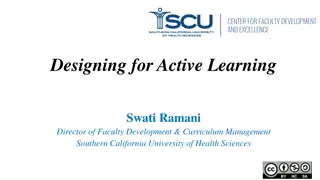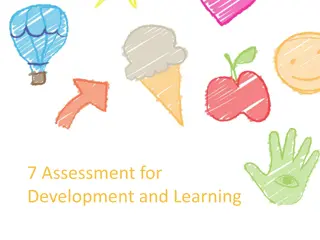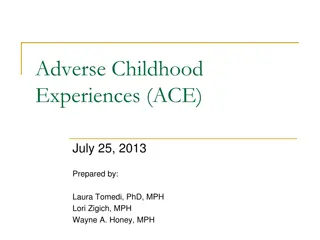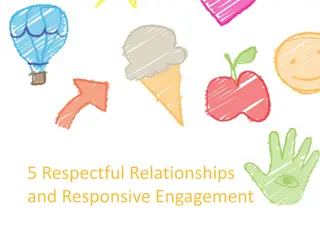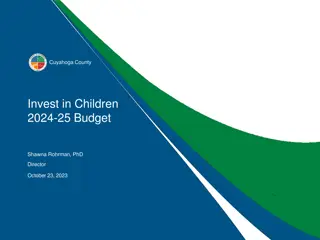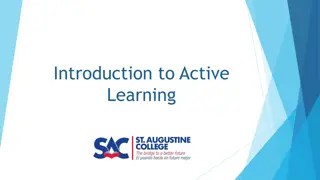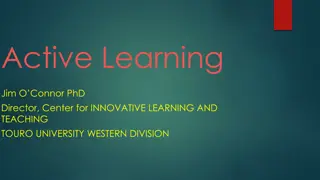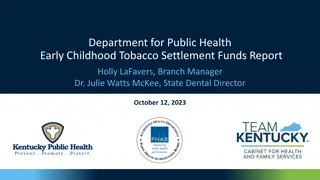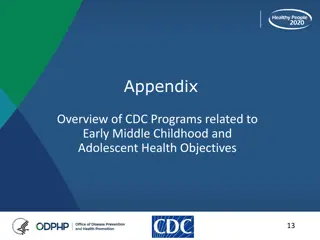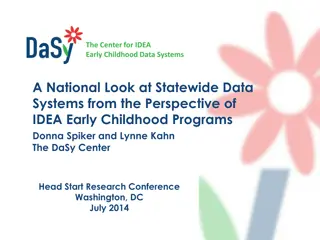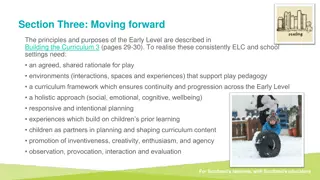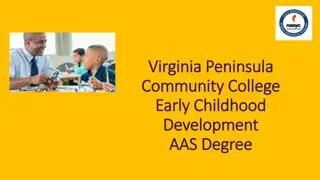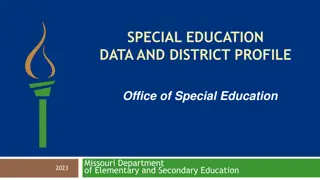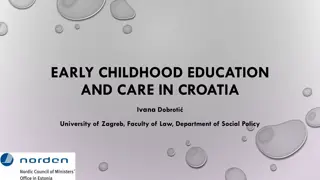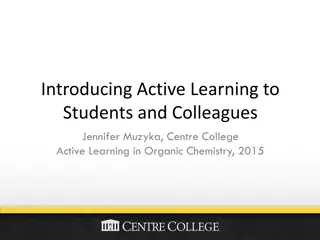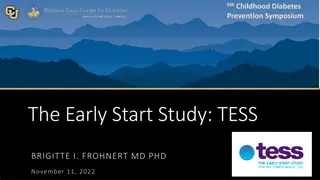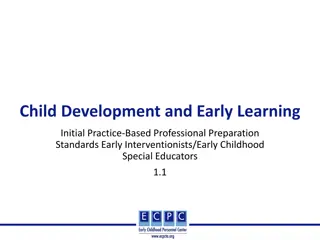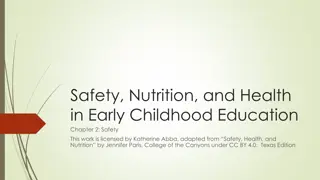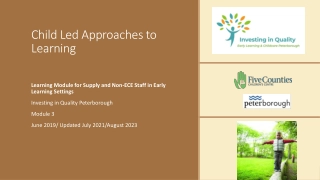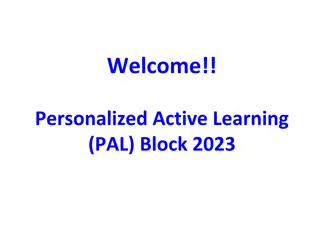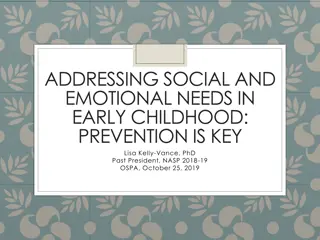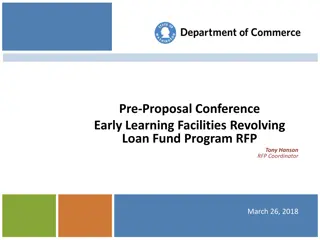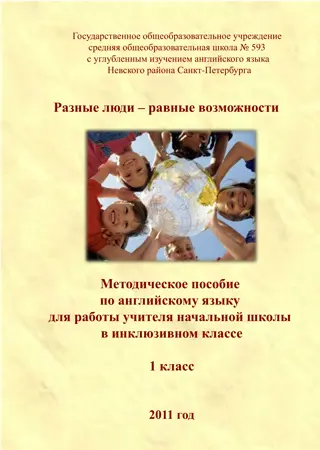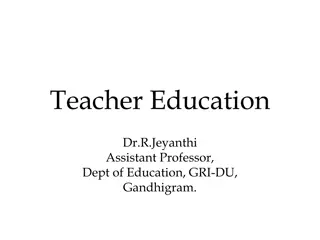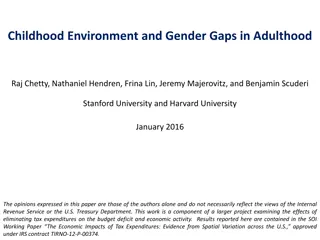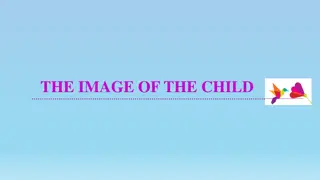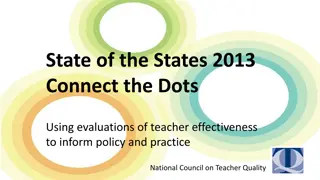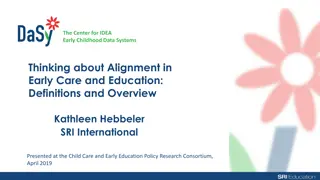Active Learning in Early Childhood Teacher Education
Explore the use of active learning strategies in Early Childhood teacher education to engage adult learners effectively. Discover the impact of active learning on teacher preparation and examine common practices in EC educator training programs. Delve into research questions on the effectiveness of active learning in teacher education and the challenges faced in the current educational landscape.
- Early Childhood Education
- Active Learning Strategies
- Teacher Preparation
- Adult Learners
- Educational Research
Download Presentation

Please find below an Image/Link to download the presentation.
The content on the website is provided AS IS for your information and personal use only. It may not be sold, licensed, or shared on other websites without obtaining consent from the author. Download presentation by click this link. If you encounter any issues during the download, it is possible that the publisher has removed the file from their server.
E N D
Presentation Transcript
Games Teachers Play Making Teacher Education Classes Developmentally Appropriate Association for Childhood Education International New Orleans, Louisiana 2011
Session Presenters B. Hammack, J. Sennette, & J. Thompson Texas A&M University-Commerce
Games & Strategies Demonstrating active learning in early childhood teacher education
Best ECE Practice Active learning is a hallmark of best practice in Early Childhood Education. (Copple & Bredekamp, 2009)
Best ECE Teacher Ed Practice Andragogy the process of engaging adult learners six characteristics of adult learners: Need to know Foundation Self-concept Readiness Orientation Motivation (Knowles, Holton, & Swanson, 2005)
Common Practice What methods of teaching were common in your training to be an EC educator? What methods are common in your current EC teacher preparation programs?
Common Expectations Instead of offering traditional lecture formats, [effective] instructors used active learning strategies to engage students in course material." (Commission on the Future of U.S. Higher Education, 2006, p. 37)
GenNext Expectations Academic entitlement Entertainment orientation Tech oriented, high stimulation The talent issue Relationships Prep issues (Taylor, 2009)
Research Question Does active learning make a difference in EC teacher preparation? Teacher educators search for effective ways to engage their audience Assist them with Praxis Provide successful examples used in adult education
Research Findings Early Childhood teacher preparation similar to plague of obesity and inactivity Learning has become inactive work for students and teachers - trained to expect passivity (Grossman, 2004; Zmuda, 2008) Learn by doing (Pica, 2008) Active learning experienced in college classrooms promote active learning in EC classrooms (Grossman, 2004)
Board Games Similar to Monopoly Academic topic math, science, social studies Game construction: Thirty pictures mounted on the board path Activity cards Dice or spinner Identify the pictures & cards Example: Numbers 1-10
Examples of active learning in adult teacher ed courses Board games Brochure Jacket or Vest DAP Book I have.. Who has.. ? Top Ten Passport Swat It! Vocabulary Quadrant Word Web
Brochure Create a leaflet Describes a topic Succinct language used Designed for eye appeal Fold paper into thirds, six panels Example: PLAY purposes and types of play play stages and characteristics benefits of play
Jacket or Vest Paper bag jacket/vest Visual representation Useable art Create from brown paper grocery bag Example: Physical-motor domain worn during presentation health, safety, and nutrition
DAP Book Alphabet book Theme (DAP) related Separate page for each letter Clip art illustrations Text describes word relationship to theme Based on DAP philosophy
I Have . . . Who Has? Collaborative Introduce early childhood ed vocabulary Short terms & definitions Example: I have childcare Who accredits childcare facilities?
Passport Create a booklet of several pages Describes a tour through a selected topic Illustration & label each page Example: Friendship shows relationships research findings conflict resolution
Swat-It Purposes: develop vocabulary concepts prep for an exam Game Rules: Played in teams by dividing class in half. Project vocabulary (20) on the wall in table format. Teacher reads short definition Person who covers word with the fly swatter wins point for team Hand swatter to the next person in line
Early Childhood Swat-It Young Children Early Childhood NAEYC Childcare Head Start Pre Reggio Emilia Multiple IQ s Kindergarten Kindergarten IDEA Dramatic Play Manipulatives Vygotsky Giftedness ELL Piaget Froebel Portfolio Montessori www
Top 10 Top ten listing Television talk show hosts strategy Use game for main ideas Learner collects data Concepts ranked ordered for importance Example: Literacy
Vocabulary Quadrant Template to analyze concepts or vocabulary Modified-Frayer model (Frayer, Frederick, & Klausmeier, 1969) Include four attributes: Define, illustrate, characteristics, & example Example: Aesthetic domain terms harmony, texture & pantomime. Combine into book format
Word Web Semantic web Visual design of concept Directions: Label center shape main idea Draw spokes to smaller shapes placed around center circle. Smaller shapes categorize related information Vehicle for brainstorming Example: Montessori web biography, principles, methods, and practices
Learning Outcomes ACTIVE LEARNING works for adult education as well as in Early Childhood Education Participants will increase their PORTFOLIO of adult TEACHING MATERIALS & STRATEGIES Time-tested examples demonstrated for college level teacher preparation classes
Game Strengths Pros Creative classroom activities Adapt and modify activities to meet teaching needs Alternative way to present text book or school district curriculum Use in student teaching experience
Game Shortcomings Cons Time consuming to use Trial and error lesson application Need to balance activities with traditional assignments
References Bauer, K., Drew, R. (1992). Alternatives to Worksheets. Cypress, CA: Creative Teaching Press, Inc. Commission on the Future of Higher Education. (2006). A Test of Leadership: Charting the Future of U.S. Higher Education. Washington, DC: U.S. Department of Education. Copple, C., & Bredekamp, S. (Eds.). (2009). Developmentally Appropriate Practice (3rded.). Washington, D.C.: NAEYC. Frayer, D., Frederick, W. C., and Klausmeier, H. J. (1969). A Schema for Testing the Level of Cognitive Mastery. Madison, WI: Wisconsin Center for Education Research. Grossman, S (2004). Making lemonade from lemons: Reflecting on difficult experiences. Childhood Education: Annual Theme 2004, 80(5), 251-253. Hiatt, C., Wolven, D., Botka, G., and Richmond, J. (1994). More Alternatives to Worksheets. Cypress, CA: Creative Teaching Press, Inc. Knowles, M., Holton, E. F., III, & Swanson, R. A. (2005). The adult learner: The definitive classic in adult education and human resource development (6th ed.). Burlington, MA: Elsevier. Petress, K. (2008). What is meant by "Active Learning?". Education, 128(4), 566-569. Pica, R. (2008). In defense of active learning. Young Children, 63(6), 52-53. Taylor, M. (2009). Generation Next Comes to College. http://www.taylorprograms.com/k12handout.html. Zmuda, A. (2008, November). Springing into active learning. Educational Leadership, 66(3), 38.
Play on!
Contact Information Barbara_Hammack@TAMU-Commerce.edu Jennifer_Sennette@TAMU-Commerce.edu Josh_Thompson@TAMU-Commerce.edu
